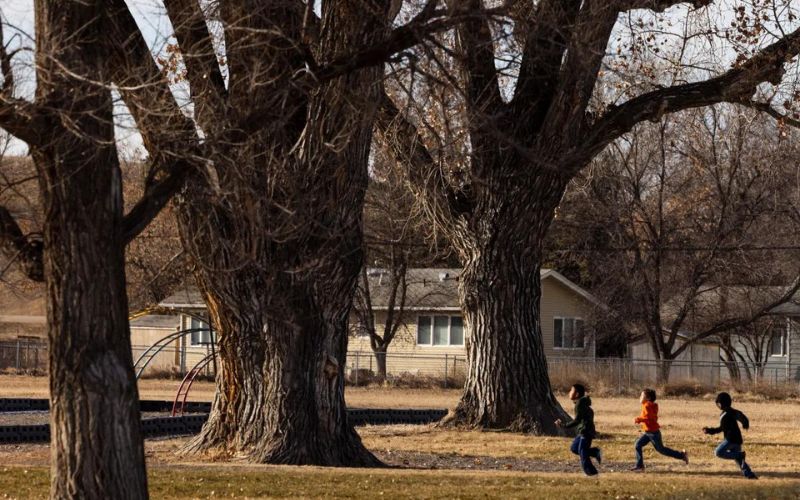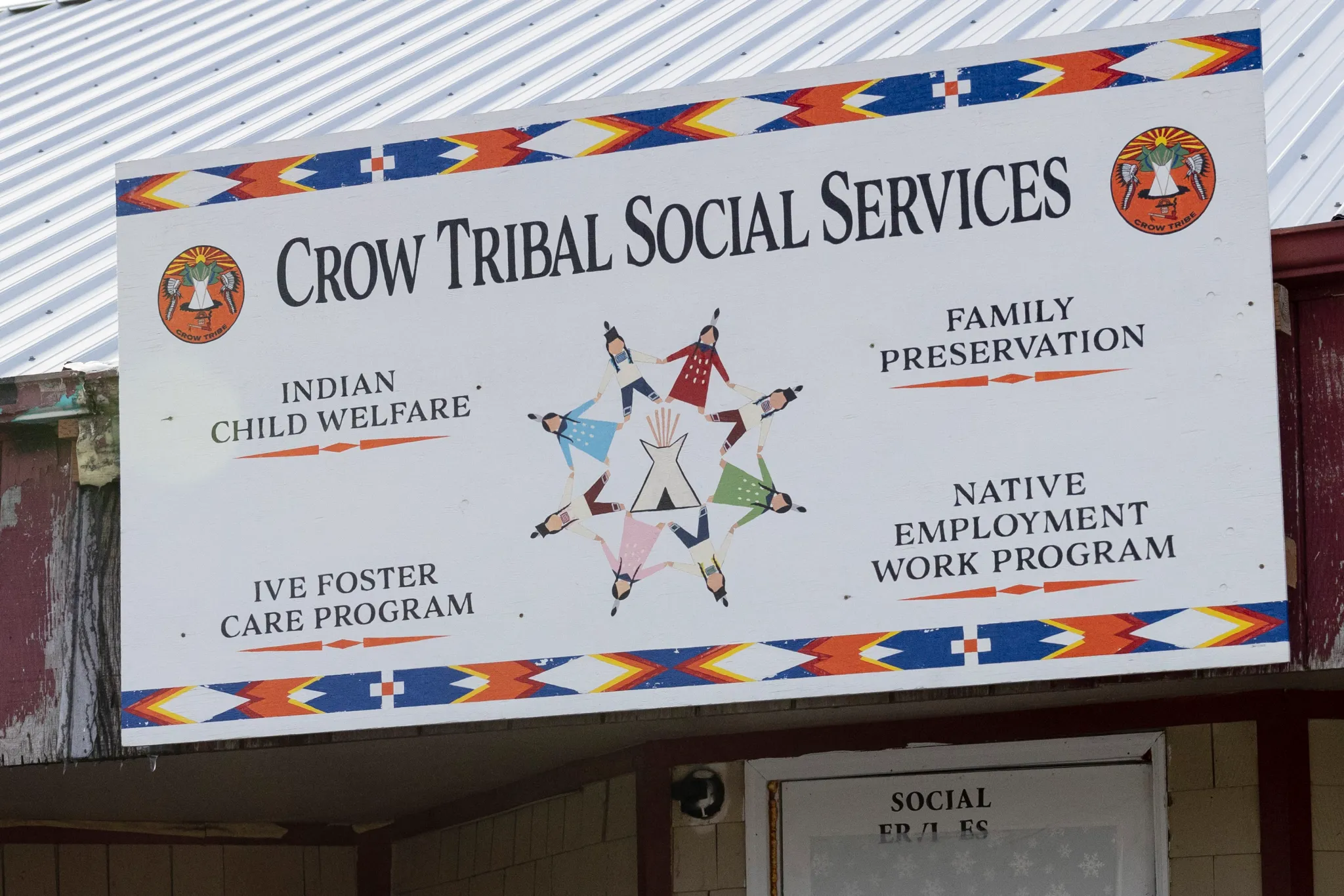
- Details
- By Mara Silvers, Montana Free Press
As Montana Free Press has reported, Native American children in Montana are involved in out-of-home foster care placements at roughly five times the rate of white children. That statistic raises numerous questions about the factors pushing families toward the foster care system, resource inequities and systemic biases, and what child welfare authorities can do to ensure that more Native families aren’t funneled into the child protection system in the first place.
This article was originally published in the Montana Free Press.
Native American children make up more than a third of the foster care caseload in Montana, despite representing less than 10% of the state’s child population. While there’s a broad consensus among child welfare experts that this outsized representation is a problem, there exists no collective strategy to address it. The Montana Free Press series Keeping the Kids, supported by a data fellowship through the USC Annenberg Center for Health Journalism, explores the available data and highlights examples of local solutions around the state. This article explains MTFP’s reporting framework and methodology.
This project, supported by a data reporting fellowship with the USC Annenberg Center for Health Journalism, is an effort to document and identify answers to that problem. We were guided by the premise that while social service workers have a responsibility to protect children by removing them from neglectful or abusive situations, federal officials and national policy advisers urge child welfare agencies to prioritize keeping families safely together. Many members of Native communities argue that maintaining an Indigenous child’s connection with their family, tribe and culture is particularly important after assimilationist child removal efforts were endorsed and carried out by the U.S. government for more than a century.
“You think about the future of your nation, nation building, hope for the future,” said Dr. Maegan Rides At The Door, a member of the Assiniboine and Sioux tribes and co-founder of the National Native Children’s Trauma Center, based in Missoula. “What does our future look like? How can we continue to revitalize our culture if we don’t have our kids here?”
That landscape makes it hard to find even seemingly basic information. There’s no single database that records the number of Native kids in foster care based on reporting by tribes, the state health department and the federal BIA. Tracking reasons for removal, whether children are placed in kinship or non-kinship homes, the length of time children spend in foster care, and rates of family reunification is similarly difficult. That’s partly because tribes, as sovereign nations, control information about cases within their jurisdictions, and government-to-government relationships between the state and tribes can be precarious.
“You have come upon the real issues and the tensions that I think are there,” Dr. Deana Around Him, a citizen of the Cherokee Nation and a child welfare researcher at the national research organization Child Trends, told MTFP. Even within specific tribal jurisdictions in the U.S., collecting, tracking and analyzing child welfare data is a heavy lift that requires significant infrastructure investments and consistent dedication.
“The data sovereignty conversation is kind of still in its emerging phase in the United States, and then it’s at a very high level and not at a practical level,” Around Him continued. “So to be able to actually coordinate with state and federal partners to house and have the data, have the protocols in place, the research codes in place to manage that data, we’re not there yet.”
Child welfare experts point out that it’s difficult to find ways to interrupt the flow of Native families into foster care without reliable data collection and information sharing about how children and families end up in the system in the first place. And expecting individual child welfare workforces to tackle that effort alone, particularly at the local or regional level, is burdensome at best and quixotic at worst. Our reporting demonstrated that people working within these systems are most focused on handling the cases they’re directly responsible for, rather than looking for collective solutions across jurisdictions.
 Crow Tribal Social Services on the Crow Reservation on Jan. 3, 2024. Credit: Tailyr Irvine / MTFP
Crow Tribal Social Services on the Crow Reservation on Jan. 3, 2024. Credit: Tailyr Irvine / MTFP
Roxanne Gourneau, a member of the tribal executive board of the Fort Peck Reservation and a former tribal court judge, told us, “You’re doing the research, so you see the silos. Everybody you’re talking to don’t see it … The individuals that you’re looking for, basically, they don’t know that those disjoints exist. They just don’t.”
Most sources we interviewed were frank about wanting better information about foster care to help track trends and find solutions. Some indicated they’d struck a balance between frustration with the status quo and a desire to make as much progress as possible.
“Everything has bad data,” said Montana Supreme Court Justice Ingrid Gustafson, an expert on child welfare law and a member of Montana’s Court Improvement Program, which focuses on improving legal processes for foster care cases. “We have data gaps, so what can we do about it?”
With that imperfection in mind, we set out to understand what’s driving racial disproportionality in foster care in Montana, and to locate possible solutions to that problem, based on the data that is available. We signed research agreements with the National Data Archive on Child Abuse and Neglect managed by Cornell University and accessed almost 48,000 entries of federally collected data on youth in foster care in Montana from 2012 to 2021, the most recent decade’s worth of data.
Each row in these reports, known as the Adoption and Foster Care Analysis and Reporting System (AFCARS), represents one child, identified only by a reference number, who was in foster care at some point that year. The reports do not document whether the state, a tribal government or the BIA is responsible for each case, making it difficult to determine how much tribal information is represented in each year of data. And though the database lists the child’s county of residence, nearly all Montana counties have such small population sizes that the county names are shielded from disclosure. Child welfare authorities take great pains to keep the identities of children and families involved in foster care private.
In each year of available data, we identified children who were categorized as only American Indian/Alaska Native (the AFCARS designation for Native American children), American Indian/Alaska Native in combination with other racial identities, or only white. We filtered out children who had exited foster care during each year, following a conservative strategy for determining annual caseloads, and used the resulting numbers to calculate the rate of foster care involvement for each racial group based on their respective youth populations as recorded by the U.S. Census Bureau from 2012 to 2021. We then averaged the annual rates across all 10 years of data.
After checking our math and methods with analysts inside and outside the MTFP newsroom, we found that American Indian/Alaska Native children in Montana were involved in foster care at an average rate of about 44 per 1,000, compared to about 9 per 1,000 white children. Children who were identified as Native in combination with other races made up a much smaller group — only 218 cases per year on average, versus more than 1,000 annual cases for single-race Native and white children, respectively — and were represented in foster care at an average rate of just under 7 per 1,000.
 The Yellowstone District Court building in Billings on Jan. 4, 2024. Credit: Tailyr Irvine / MTFP
The Yellowstone District Court building in Billings on Jan. 4, 2024. Credit: Tailyr Irvine / MTFP
All these statistics almost certainly undercount the number of Native American children in foster care in Montana across different jurisdictions. Through interviews with the state health department and tribal social service administrators, we learned that among tribally managed cases, only those that qualify for special federal funding are routinely reported to the state database from which AFCARS collects its information. That means the AFCARS report on Montana, and therefore MTFP’s analysis, includes information about some cases handled by tribal social services, but certainly not all. Separately, the Bureau of Indian Affairs acknowledged but did not provide answers to a list of questions submitted two months before our February publication date about the caseloads its workers handle through contracts with various tribal nations.
Our reporting included other data findings beyond the rate of foster care involvement of different racial groups. We dug into the prevalence of caseworker-identified neglect in child welfare cases and the relative rarity of cases involving abuse. We examined the growing trend of parental drug abuse as a factor for foster care involvement across all racial groups in Montana, and profiled a maternal health program designed to address that problem. We also spent time in a dedicated Indian Child Welfare Act court in Yellowstone County, where parents and court staff are working to reunify as many families as possible.
The entirety of this series, Keeping the Kids, can be found here.
Please send questions and comments about this work to [email protected].
Help us tell the stories that could save Native languages and food traditions
At a critical moment for Indian Country, Native News Online is embarking on our most ambitious reporting project yet: "Cultivating Culture," a three-year investigation into two forces shaping Native community survival—food sovereignty and language revitalization.
The devastating impact of COVID-19 accelerated the loss of Native elders and with them, irreplaceable cultural knowledge. Yet across tribal communities, innovative leaders are fighting back, reclaiming traditional food systems and breathing new life into Native languages. These aren't just cultural preservation efforts—they're powerful pathways to community health, healing, and resilience.
Our dedicated reporting team will spend three years documenting these stories through on-the-ground reporting in 18 tribal communities, producing over 200 in-depth stories, 18 podcast episodes, and multimedia content that amplifies Indigenous voices. We'll show policymakers, funders, and allies how cultural restoration directly impacts physical and mental wellness while celebrating successful models of sovereignty and self-determination.
This isn't corporate media parachuting into Indian Country for a quick story. This is sustained, relationship-based journalism by Native reporters who understand these communities. It's "Warrior Journalism"—fearless reporting that serves the 5.5 million readers who depend on us for news that mainstream media often ignores.
We need your help right now. While we've secured partial funding, we're still $450,000 short of our three-year budget. Our immediate goal is $25,000 this month to keep this critical work moving forward—funding reporter salaries, travel to remote communities, photography, and the deep reporting these stories deserve.
Every dollar directly supports Indigenous journalists telling Indigenous stories. Whether it's $5 or $50, your contribution ensures these vital narratives of resilience, innovation, and hope don't disappear into silence.
 The stakes couldn't be higher. Native languages are being lost at an alarming rate. Food insecurity plagues many tribal communities. But solutions are emerging, and these stories need to be told.
The stakes couldn't be higher. Native languages are being lost at an alarming rate. Food insecurity plagues many tribal communities. But solutions are emerging, and these stories need to be told.
Support independent Native journalism. Fund the stories that matter.
Levi Rickert (Potawatomi), Editor & Publisher
